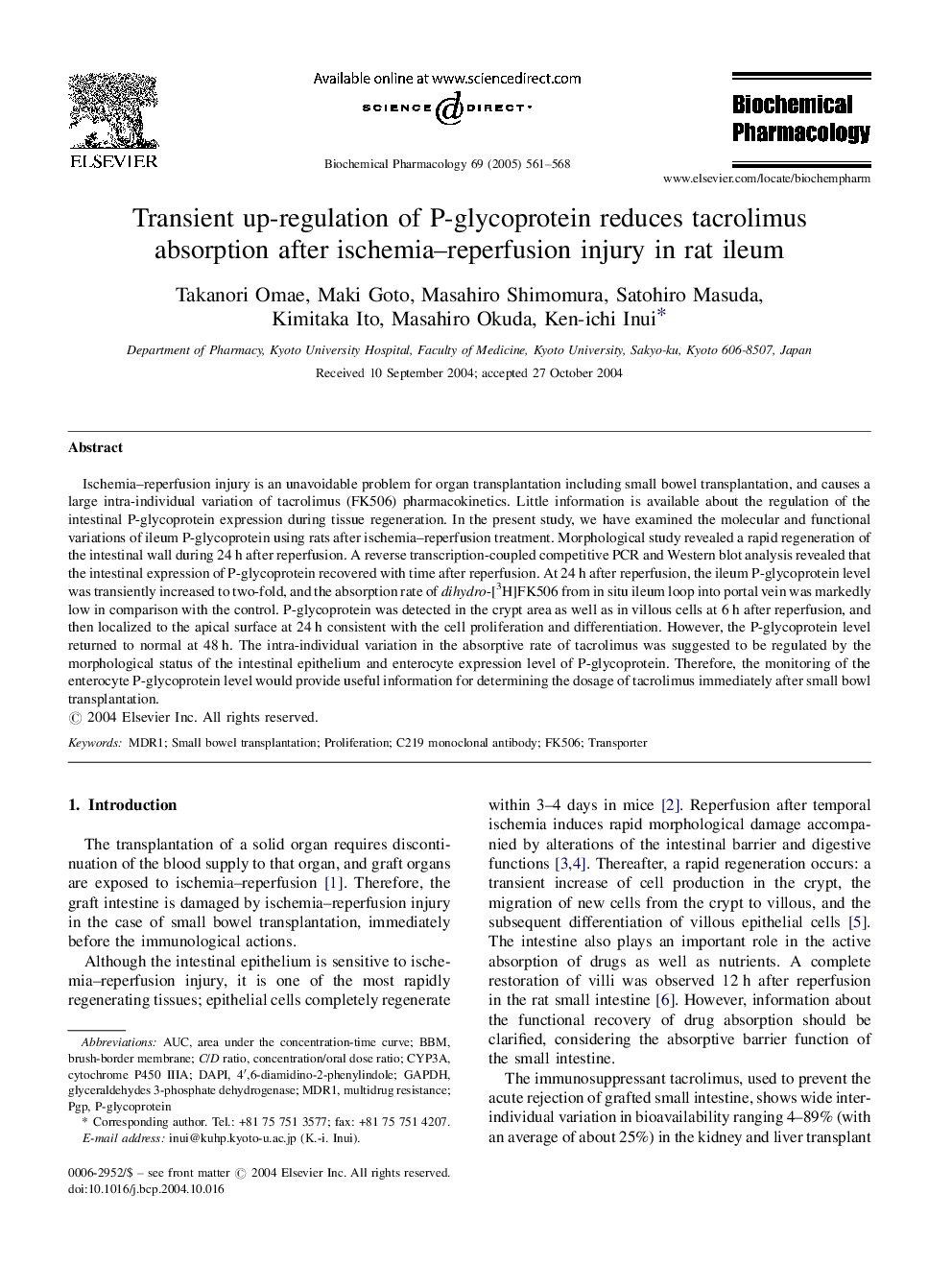| Article ID | Journal | Published Year | Pages | File Type |
|---|---|---|---|---|
| 9002304 | Biochemical Pharmacology | 2005 | 8 Pages |
Abstract
Ischemia-reperfusion injury is an unavoidable problem for organ transplantation including small bowel transplantation, and causes a large intra-individual variation of tacrolimus (FK506) pharmacokinetics. Little information is available about the regulation of the intestinal P-glycoprotein expression during tissue regeneration. In the present study, we have examined the molecular and functional variations of ileum P-glycoprotein using rats after ischemia-reperfusion treatment. Morphological study revealed a rapid regeneration of the intestinal wall during 24Â h after reperfusion. A reverse transcription-coupled competitive PCR and Western blot analysis revealed that the intestinal expression of P-glycoprotein recovered with time after reperfusion. At 24Â h after reperfusion, the ileum P-glycoprotein level was transiently increased to two-fold, and the absorption rate of dihydro-[3H]FK506 from in situ ileum loop into portal vein was markedly low in comparison with the control. P-glycoprotein was detected in the crypt area as well as in villous cells at 6Â h after reperfusion, and then localized to the apical surface at 24Â h consistent with the cell proliferation and differentiation. However, the P-glycoprotein level returned to normal at 48Â h. The intra-individual variation in the absorptive rate of tacrolimus was suggested to be regulated by the morphological status of the intestinal epithelium and enterocyte expression level of P-glycoprotein. Therefore, the monitoring of the enterocyte P-glycoprotein level would provide useful information for determining the dosage of tacrolimus immediately after small bowl transplantation.
Related Topics
Health Sciences
Pharmacology, Toxicology and Pharmaceutical Science
Pharmacology
Authors
Takanori Omae, Maki Goto, Masahiro Shimomura, Satohiro Masuda, Kimitaka Ito, Masahiro Okuda, Ken-ichi Inui,
